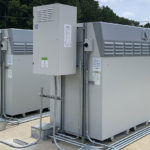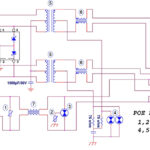More stringent requirements are scheduled to soon emerge from standards bodies that will affect a wide range of manufactured equipment.
Sebastian Fischer, Andreas Flũhlern • Traco Electronic AG
Standards committees are working on a new, common standard for safety requirements governing audio/video, information and communication technology–the IEC/EN/UL 62368-1. The first version of IEC 62368-1 was published in 2010. The current EN 62368-1 in its second edition has been in effect since 2016. The replacement of the previous EN 60950-1 standard will have a big impact on electrical equipment, and it will affect system developers who select and use power supplies.
Electrical equipment put into circulation within the European Union market (EU, EFTA and other countries) must carry a CE label if the equipment is subject to an EU directive (such as the low-voltage directive). By means of this CE declaration, the manufacturer confirms the electrical equipment’s safety and/or conformity. In this context, the term ‘electrical equipment’ pertains to a variety of devices such as industrial PCs, measuring equipment, and other instruments referred to as “terminal devices,” as well as components such as ac/dc switching power supplies which, in turn, may be part of a terminal device.
As a rule, a harmonized standard is used for evaluating safety. An accredited certification body (e.g., TÜV, SIQ, UL, etc.) checks the terminal device’s compliance with the standard’s safety regulations. For many years, a widespread standard in this regard has been the EN 60950-1. This standard basically describes information technology equipment, but it is also used for evaluating electrical safety in many other areas. As a result, developers of terminal devices often rely on components, e.g., power supplies, that were also tested in accordance with the EN 60950-1 and for which there is proof of a safety check by means of a report and certificate.

EN 60950-1 will no longer be valid (or, more precisely: the presumption of conformity for the EU low-voltage directive will be withdrawn) in Europe as of 20 December 2020. EN 60950-1 will be replaced by EN 62368-1. The new EN 62368-1 standard follows a risk-based approach to assess whether or not a product is safe by defining various risk sources, protective measures and user groups. At dictates that a protective device be provided depending on the energy source’s risk potential (e.g., electrical voltage) and the user’s category (e.g., normal user). In an ac/dc switching power supply, a reinforced insulation between the 230-Vac input side and the dc side could serve as an example of such a protective measure (unless the user circle is restricted to specially trained people).
In addition, depending on type and predominant area of use, other standards may also apply for power supplies. One is the EN 61010-1 standard which, in particular, will become the relevant standard for the power supply to control devices in industrial settings (control cabinets). Ultimately, the differences between the old EN 60950-1 and the new EN 62368-1 for the actual technical establishment of power supplies tend to be rather small and often do not require any design changes.

If a manufacturer or importer previously certified its terminal device in accordance with the EN 60950-1, there is a high probability that they must now comply with the new EN 62368-1 standard after 12/20/20. Of course, it is also possible to apply another harmonized standard that is listed under the low-voltage standard (e.g., the EN 61010-1). Components such as dc/dc converters and/or ac/dc switching power supplies for EN 62368-1 compliant terminal devices must also be certified in accordance with EN 62368-1.
As a matter of principle, only power supplies subject to the EU low-voltage directive must be provided with a CE label. If such a power supply is certified according to the EN 62368-1, safety in compliance with the directive is assumed, and the power supply may be provided with a CE label and put into circulation. If such a power supply is “only” certified according to EN 60950-1, this presumption of safety will become void as of 12/20/20. After that date, the power supply may only be put into circulation if it has been certified according to EN 62368-1 (or another valid standard).
No CE label may be issued for power supplies not subject to the directive. The limit below which power supplies are not subject to the low-voltage directive is defined as 50 Vac or 74 Vdc. Thus ac/dc power supply units generally are subject to this directive and therefore must also have the EN 62368-1 certification as of 12/20/20 to be legally sold in Europe.
Many industrial dc/dc converters have a nominal voltage ≤75 Vdc and are therefore not subject to the directive, which means terminal device manufacturers can put them into circulation without EN 62368-1 certification. Exceptions are possible. One is if the dc/dc converter is used in an environment with more stringent requirements regarding the converter’s insulation for user safety (safe separation by means of reinforced or doubled insulation). Due to the normally higher input voltages (typically up to 160 Vdc), dc/dc converters for the rail sector are also subject to the low-voltage directive.
For manufacturers of EN 62368-1- compliant terminal devices, it is often expected that even non-CE-required power supply components be certified in accordance with EN 62368-1 to reduce the testing effort.
Like other manufacturers, the makers of power supplies are also affected by the certification bodies’ limited testing resources. Though (re)certification to the updated standard has been in the works for years, it’s likely not all products will have been tested by 12/20/20. Traco Power’s portfolio includes over 300 product families with more than 5000 individual products. Over 98% of these are being recertified (if recertification is obligatory). However, there are also other manufacturers who use this deadline to streamline their product portfolios. This means that in most cases not all of the products are recertified, which may lead to difficulties for the users of these products when certifying the terminal device.
However, many terminal device manufacturers have already certified their terminal devices to EN 62368-1 or are in the process of doing so. For them, the question is to what extent they can use power supplies that are currently (i.e., prior to 12/20/20) “only” certified according to EN 60950-1 but not yet according to the new EN 62368-1. In this regard, power supplies tested to Amendment Two of the EN 60950-1 will be accepted by the certification bodies for use in EN 62368-1-mandatory terminal devices. Thus manufacturers that currently certify their terminal device according to EN 62368-1 will be able to use these power supplies without problems. Whether Amendment 2 was also tested can be seen in the safety certificate, if the manufacturer publishes one.

As of 12/20/20 these power supplies must also have the EN 62368-1 certificate. In this context, the deadline of 12/20/20 refers to putting the product into circulation (EU import or availability on the market). For example, if the terminal device manufacturer received its EN 60950-1-certified power supplies prior to this deadline, the terminal device may also be used after 12/20/20. Thus, the terminal device manufacturer can sell terminal devices (with EN 62368-1 certification) that are equipped with an EN 60950-1 + Amendment Two power supply even after 12/20/20, as long as this power supply was imported into the EU or sold within the EU prior to 12/20/20. In principle, this also makes it possible to accumulate a “transitional supply.”
It should be noted that different situations arise outside of Europe. For example, in North America the UL 60950 remains valid, i.e., the UL 62368-1 will only be obligatory in case of new certifications. Devices certified to UL 60950 may also be put into circulation after 12/20/20.
There are also countries (e.g., China) where the new standard is not accepted at all. However, exceptions apply regarding the use of components (such as power supplies); these may also be used with an EN 62368-1 certificate in terminal devices with EN 60950-1 certification.
In a nutshell, power supplies used in terminal devices after 12/20/20 also require certification in accordance with the EN 62368-1. However, this is only mandatory if the power supply is also subject to the EU low-voltage directive, which is usually the case for ac/dc switching power supplies but not for many dc/dc converters. Terminal device manufacturers can already use power supplies tested in accordance with EN 60950-1, Amendment Two in their EN 62368-1-certified terminal devices.







Leave a Reply